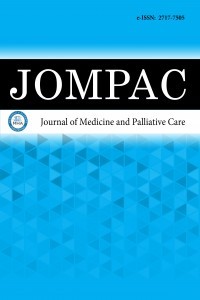1.
Karakus MF, Ozcan KM, Ozcan M, Yuksel Y, Titiz A, Unal A.Changes in indications for endoscopic sinonasal surgery over 14years. B-ENT. 2008;4(4):221-225.
2.
Stammberger H, Posawetz W. Functional endoscopic sinussurgery. Concept, indications and results of the Messerklingertechnique. Eur Arch Otorhinolaryngol. 1990;247(2):63-76.doi:10.1007/BF00183169
3.
Watelet JB, Annicq B, van Cauwenberge P, Bachert C.Objective outcome after functional endoscopic sinus surgery:prediction factors. Laryngoscope. 2004;114(6):1092-1097.doi:10.1097/00005537-200406000-00025
4.
Jiang RS, Hsu CY. Functional endoscopic sinus surgery inchildren and adults. Ann Otol Rhinol Laryngol. 2000;109(12 Pt1):1113-1116. doi:10.1177/000348940010901205
5.
Toros SZ, Bölükbasi S, Naiboğlu B, et al. Comparative outcomesof endoscopic sinus surgery in patients with chronic sinusitis andnasal polyps. Eur Arch Otorhinolaryngol. 2007;264(9):1003-1008.doi:10.1007/s00405-007-0301-5
6.
Lund VJ, Stammberger H, Nicolai P, et al. European positionpaper on endoscopic management of tumours of the nose,paranasal sinuses and skull base. Rhinol Suppl. 2010;22:1-143.Published 2010 Jun 1.
7.
von Buchwald C, Bradley PJ. Risks of malignancy in invertedpapilloma of the nose and paranasal sinuses. Curr OpinOtolaryngol Head Neck Surg. 2007;15(2):95-98. doi:10.1097/MOO.0b013e3280803d9b
8.
Norlander T, Frödin JE, Silfverswärd C, Anggård A. Decreasingincidence of malignant tumors of the paranasal sinuses in Sweden.An analysis of 141 consecutive cases at Karolinska Hospital from1960 to 1980. Ann Otol Rhinol Laryngol. 2003;112(3):236-241.doi:10.1177/000348940311200308
9.
de Almeida JR, Su SY, Koutourousiou M, et al. Endonasalendoscopic surgery for squamous cell carcinoma of the sinonasalcavities and skull base: Oncologic outcomes based on treatmentstrategy and tumor etiology. Head Neck. 2015;37(8):1163-1169.doi:10.1002/hed.23731
10.
König M, Osnes TA, Lobmaier I, et al. Multimodal treatment ofcraniofacial osteosarcoma with high-grade histology. A single-center experience over 35 years. Neurosurg Rev. 2017;40(3):449-460. doi:10.1007/s10143-016-0802-z
11.
König M, Osnes T, Jebsen P, Meling TR. Craniofacial resectionof malignant tumors of the anterior skull base: a case series anda systematic review. Acta Neurochir (Wien). 2018;160(12):2339-2348. doi:10.1007/s00701-018-3716-4
12.
Ghogomu N, Kern R. Chronic rhinosinusitis: the rationale forcurrent treatments. Expert Rev Clin Immunol. 2017;13(3):259-270. doi:10.1080/1744666X.2016.1220833
13.
Wong JS, Hoffbauer S, Yeh DH, Rotenberg B, Gupta M, SommerDD. The usefulness of routine histopathology of bilateral nasalpolyps - a systematic review, meta-analysis, and cost evaluation.J Otolaryngol Head Neck Surg. 2015;44:46. doi:10.1186/s40463-015-0100-8
14.
van den Boer C, Brutel G, de Vries N. Is routine histopathologicalexamination of FESS material useful?. Eur Arch Otorhinolaryngol.2010;267(3):381-384. doi:10.1007/s00405-009-1097-2
15.
Yaman H, Alkan N, Yilmaz S, Koc S, Belada A. Is routinehistopathological analysis of nasal polyposis specimensnecessary?. Eur Arch Otorhinolaryngol. 2011;268(7):1013-1015.doi:10.1007/s00405-011-1534-x
16.
Garavello W, Gaini RM. Histopathology of routine nasalpolypectomy specimens: a review of 2,147 cases. Laryngoscope.2005;115:1866-8.
17.
Diamantopoulos II, Jones NS, Lowe J. All nasal polyps needhistological examination: an audit-based appraisal of clinicalpractice. J Laryngol Otol. 2000;114:755-9.
18.
Romashko AA, Stankiewicz JA. Routine histopathology inuncomplicated sinus surgery: is it necessary?. OtolaryngolHead Neck Surg. 2005;132(3):407-413. doi:10.1016/j.otohns.2004.10.002
19.
Kale SU, Mohite U, Rowlands D, Drake-Lee AB. Clinical andhistopathological correlation of nasal polyps: are there anysurprises?. Clin Otolaryngol Allied Sci. 2001;26(4):321-323.doi:10.1046/j.1365-2273.2001.00482.x
20.
Govindaraj S, Wang H. Does human papilloma virus play a role insinonasal inverted papilloma?. Curr Opin Otolaryngol Head NeckSurg. 2014;22(1):47-51. doi:10.1097/MOO.0000000000000017
21.
Lisan Q, Laccourreye O, Bonfils P. Sinonasal inverted papilloma:From diagnosis to treatment. Eur Ann Otorhinolaryngol HeadNeck Dis. 2016;133(5):337-341. doi:10.1016/j.anorl.2016.03.006

